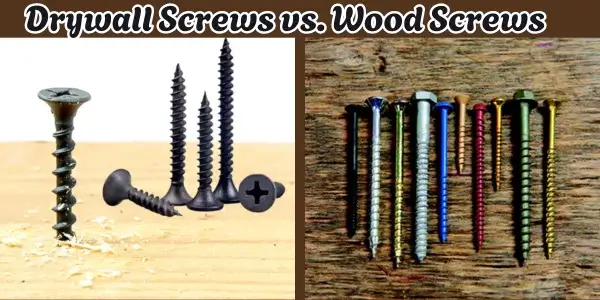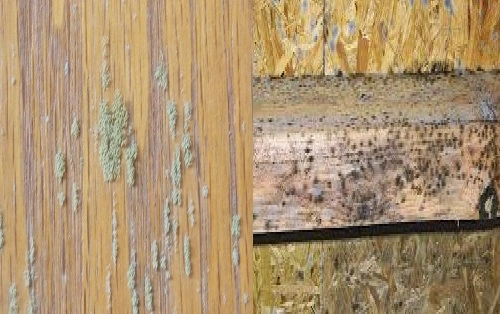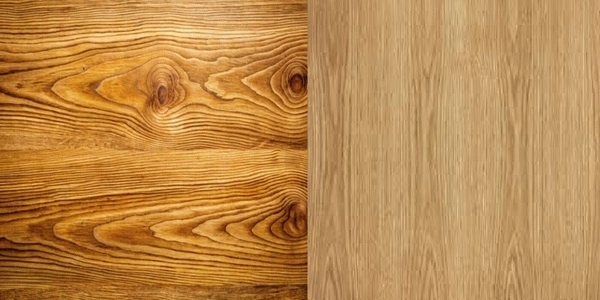When it comes to building and DIY projects in the United States, selecting the right screws is critical to the success and longevity of your work. Screws come in many types, each designed for specific applications. Two of the most common fasteners that often get compared are drywall screws and wood screws. While they may appear similar at first glance, they serve very different purposes.
This article dives deep into the differences between drywall screws and wood screws, their applications, advantages, and which one is better suited for your project.
What Are Drywall Screws?
Drywall screws are specially designed to attach drywall (gypsum board) to wooden or metal studs in wall and ceiling construction. They are made from hardened steel, often coated with a black phosphate finish to resist rust during short-term exposure to moisture.
Characteristics of Drywall Screws:
- Material and Finish: Made of brittle, hardened steel with a phosphate coating.
- Thread: Drywall screws typically have fine threads for metal studs or coarse threads for wood studs.
- Head: The bugle-shaped head allows for countersinking, which helps the screw sit flush with or slightly below the drywall surface without tearing the paper face.
- Length: They come in various lengths, most commonly ranging from 1 inch to 3 inches.
Primary Use:
Drywall screws are ideal for:
- Hanging drywall panels on wooden or metal studs.
- Fastening light materials in interior wall projects.
What Are Wood Screws?
Wood screws, as the name suggests, are designed to join pieces of wood together. They are typically made of softer, more ductile steel, brass, or stainless steel, which allows them to withstand higher torque without snapping. Wood screws come with a variety of finishes to protect against corrosion in interior and exterior environments.
Characteristics of Wood Screws:
- Material and Finish: Usually made from softer metals with options for corrosion-resistant finishes (e.g., galvanized, brass, or stainless steel).
- Thread: Wood screws have wider, coarse threads to create a strong grip in wood fibers.
- Head: Available in flat, round, or pan-head styles to suit different woodworking applications.
- Tip: Many wood screws have a pointed tip to allow for self-starting when driving into wood.
- Length: Wood screws come in a wider range of lengths and gauges compared to drywall screws.
Primary Use:
Wood screws are used for:
- Attaching two or more pieces of wood.
- Building furniture, cabinetry, decking, and framing.
- Applications that require strong, durable wood-to-wood connections.
Key Differences Between Drywall Screws and Wood Screws

Here are the main differences between drywall screws and wood screws:
- Thread Design:
- Drywall Screws: Designed for drywall-specific tasks. They feature coarse threads for wood studs and fine threads for metal studs.
- Wood Screws: Feature deep, coarse threads designed to firmly grip into wood fibers without slipping.
- Material Strength:
- Drywall Screws: Made of hardened steel, which is brittle and prone to snapping under excessive torque.
- Wood Screws: Made of softer, more flexible steel, brass, or stainless steel, allowing for better durability in wood applications.
- Head Design:
- Drywall Screws: Bugle head for smooth countersinking in drywall.
- Wood Screws: Variety of head shapes, such as flat, round, or pan, depending on the woodworking project.
- Application-Specific Use:
- Drywall Screws: Best for securing drywall to studs but are not suitable for structural or heavy-duty applications.
- Wood Screws: Specifically designed for wood-to-wood connections, making them better suited for structural and furniture applications.
- Strength Under Pressure:
- Drywall screws are brittle and can snap under stress, making them a poor choice for holding heavy loads.
- Wood screws, on the other hand, are engineered to handle higher stress without breaking.
Can You Use Drywall Screws in Wood?
This is a common question for DIY enthusiasts. While drywall screws may seem like a quick substitute for wood screws, using them in woodworking projects is not recommended.
Why?
- Brittle Steel: Drywall screws can snap under the pressure of heavy loads or torque when driven into dense wood.
- Weak Grip: Their threads are not optimized to create the strong grip needed for wood fibers.
- No Corrosion Protection: Most drywall screws lack proper corrosion resistance for long-term use in woodwork, especially for outdoor projects.
If you are working on furniture, cabinetry, or structural wood projects, always use wood screws for their durability and strength.
Pros and Cons
| Feature | Drywall Screws | Wood Screws |
|---|---|---|
| Strength | Brittle, prone to snapping | Strong and flexible |
| Material | Hardened steel with black phosphate | Softer steel, brass, or stainless steel |
| Application | Attaching drywall panels | Joining wood pieces |
| Head Design | Bugle head for countersinking | Flat, round, or pan-head options |
| Corrosion Resistance | Minimal short-term protection | Excellent, varies with finish |
| Ease of Use | Easier for lightweight tasks | Optimized for woodworking |
Choosing the Right Screw for Your Project
When deciding between drywall screws and wood screws, consider the following:
- Project Type:
- Use drywall screws exclusively for drywall installation.
- Use wood screws for woodworking, furniture building, and structural applications.
- Material:
- For indoor, lightweight tasks, drywall screws work well.
- For outdoor or heavy-duty tasks, wood screws with galvanized or stainless finishes offer superior durability.
- Load-Bearing Capacity:
- Drywall screws are not designed for weight-bearing applications.
- Wood screws are the best choice when strength and load-bearing capacity are required.
Conclusion
While drywall screws and wood screws may appear similar at first glance, their differences in material, thread design, and application are significant. Drywall screws are optimized for securing drywall panels but lack the strength and durability needed for woodworking projects. On the other hand, wood screws are engineered to provide strong, long-lasting connections for wood applications.
For any project involving wood, always opt for wood screws to ensure durability and safety. Meanwhile, stick to drywall screws for hanging drywall and similar lightweight applications. Choosing the right screw will not only make your job easier but will also ensure the integrity of your work in the long run.

